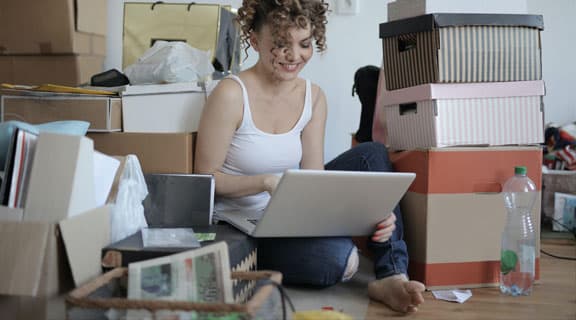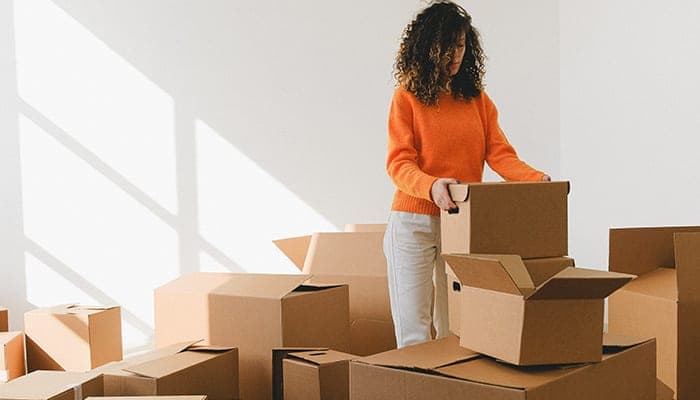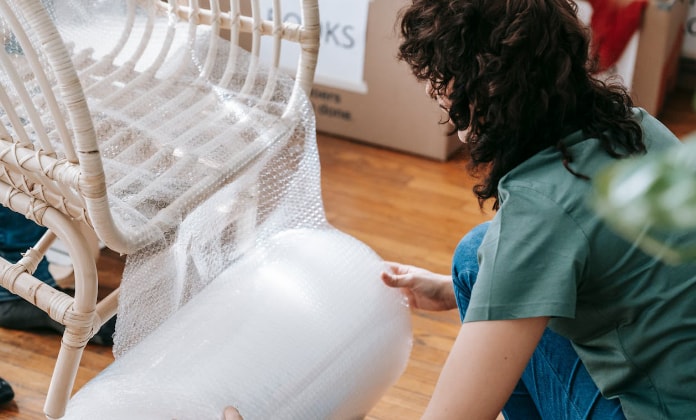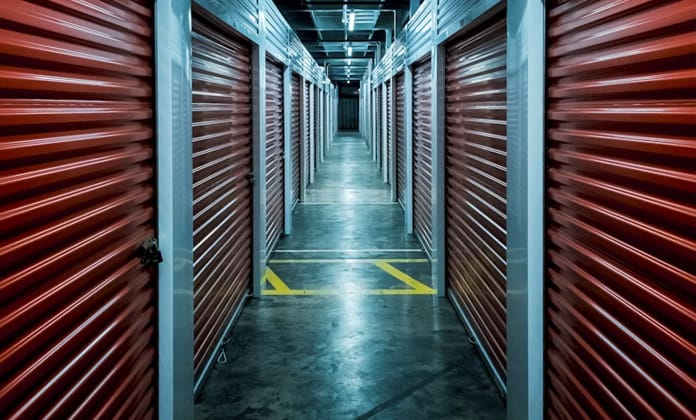Feeling a bit overwhelmed by clutter? Are boxes piling up in every corner, or perhaps you're in the middle of a big move and need a temporary home for your precious belongings? You're not alone! Many of us face the challenge of needing more space than our homes can comfortably offer. That's where self-storage comes in – it's a flexible and convenient solution that can genuinely make your life easier, less stressful, and a lot more organised.

Our Blog
How To Pack Your Self-Storage Unit: Tips For Maximising The Space

Think of a self-storage unit not just as a big empty box, but as an extension of your home, a secure haven for your possessions, or even a strategic base for decluttering projects. Whether you're downsizing, renovating, heading off on an adventure, or just need to clear some space, self-storage offers a fantastic way to keep your items safe, sound, and accessible whenever you need them. It provides much-needed breathing room, allowing you to reclaim your living areas and enjoy a more streamlined home environment.
Making the Most of Your Storage Space
But here's the thing: simply chucking everything into a unit willy-nilly isn't going to give you the stress-free experience you're hoping for. In fact, a poorly packed unit can lead to frustration, damaged items, and a whole lot of wasted time when you're trying to find something specific. That's why mastering the art of packing your self-storage unit is so crucial. It’s about more than just fitting things in; it's about smart planning, clever packing techniques, and maximising every square foot of your rented space.
In this comprehensive guide, we'll walk you through everything you need to know to pack your self-storage unit like a seasoned pro. We’ll share practical tips on how to prepare your items, choose the right packing materials, protect your valuables, and arrange everything strategically for easy access and ultimate protection. Our goal is to transform what might seem like a daunting task into a simple, straightforward process that leaves you feeling confident and in control. So, get ready to unlock the full potential of your self-storage unit and discover just how convenient and liberating organised storage can be! Let's get packing!
Planning for Storage Success
Before you even think about lifting a box, the most crucial step in a successful self-storage venture is planning. A little preparation goes a very long way, saving you time, effort, and potential headaches down the line. Think of it as laying the groundwork for an organised, accessible, and stress-free storage experience. Skipping this stage often leads to haphazard packing, damaged goods, and that frustrating feeling of not being able to find what you need when you eventually return.
Decluttering Your Belongings
This is arguably the most vital step, and frankly, the most liberating! Why pay to store items you no longer want, need, or use? Before anything enters a box, take a good, honest look at all the items you're considering storing. Embrace the "reduce, reuse, recycle" mantra.
- Be ruthless: Ask yourself: Have I used this in the last year? Does it hold significant sentimental value? Is it broken or irreparable? If the answer is "no" to the first two, and "yes" to the last, it might be time to let it go.
- Create three piles: "Keep," "Donate/Sell," and "Dispose." Items for donation or sale can go to local charity shops, be listed on online marketplaces, or given to friends and family who might benefit from them. For things that are truly rubbish, ensure they're disposed of responsibly.
- The benefit: Decluttering not only saves you money on storage space (as you might need a smaller unit), but it also simplifies the packing process and means you're only storing items that genuinely matter to you.

Taking Stock: Creating an Inventory
Once you've decluttered, it's time to get systematic. Creating an inventory might sound a bit formal, but it's an absolute game-changer. This is simply a detailed list of everything you're putting into storage.
- Why bother? An inventory serves multiple purposes. Firstly, it helps you keep track of what's where, making retrieval infinitely easier. Secondly, in the unfortunate event of damage or loss, it's invaluable for insurance claims.
- How to do it: You can use a simple notebook, a spreadsheet on your computer, or even a dedicated app. List each box and its main contents (e.g., "Box 12 - Kitchen Utensils, Small Appliances"). For more valuable items, you might want to note their condition or even take a photo.
- Keep it accessible: Store a copy of your inventory both at home and perhaps a digital version in the cloud, so you can always refer to it.
Gathering Your Packing Essentials
With your decluttering done and inventory started, it's time to gather the right tools for the job. Using appropriate, good-quality packing materials will protect your items and make the whole process much smoother. Don't skimp here – a few extra quid spent on decent supplies can save you a fortune in damaged goods later!
Here’s a handy checklist of what you'll need:
- Strong, uniform boxes: Opt for sturdy, double-walled cardboard boxes if possible. Uniform sizes make stacking much easier and safer. Avoid using flimsy supermarket boxes that might collapse.
- Packing tape: Good quality, strong adhesive tape is essential. Invest in a tape dispenser for ease of use.
- Bubble wrap and packing paper: Crucial for protecting fragile items, glassware, and electronics. Old newspapers can work for some items, but be mindful that ink can transfer.
- Furniture blankets/old quilts: Ideal for protecting larger items like furniture, mirrors, and artwork from scratches and dust.
- Stretch wrap/shrink wrap: Great for securing drawers, keeping sets of items together, and providing an extra layer of protection against dust and moisture.
- Markers: Thick, permanent markers for clear and concise labelling.
- Scissors/utility knife: For opening packaging and cutting tape/wrap.
- Dust sheets/tarpaulins: To cover items in the unit for extra dust protection.
By taking the time for these initial planning steps, you're setting yourself up for a truly efficient and successful self-storage experience. You'll enter your unit with a clear strategy, knowing exactly what's going in and how it's going to be protected.
Protecting Your Possessions
Now that you've meticulously planned and gathered your arsenal of packing supplies, it's time to dive into the art of packing itself. This isn't just about Tetris-ing items into boxes; it's about protecting your valued possessions so they emerge from storage in exactly the same condition they went in. Smart packing techniques are your best defence against dust, damp, breakages, and general wear and tear.
Choosing the Right Boxes and Containers
The foundation of smart packing lies in your choice of containers.
- Opt for uniformity: Whenever possible, use strong, purpose-built moving boxes. These are designed to be sturdy, stackable, and handle the rigours of transport and storage. Using boxes of similar sizes will make stacking far more stable and efficient in your unit.
- Resist overfilling: A common mistake is cramming too much into one box. While it might seem efficient, it makes boxes too heavy to lift safely and puts undue strain on the box itself, risking collapse. Distribute weight evenly – put heavier items in smaller boxes and lighter, bulkier items in larger ones.
- Consider plastic crates: For items you might need more frequent access to, or for extra protection against moisture, sturdy plastic crates with lids are an excellent investment.
Labelling Like a Pro
This might sound like a minor detail, but clear and consistent labelling will be your best friend when it comes to retrieving items later.
- Be specific: Don't just write "Kitchen." Instead, write "Kitchen - Pots, Pans & Baking Trays" or "Living Room - Books & Photo Albums." The more detail, the better.
- Label multiple sides: Mark at least two sides of each box, ideally the top and a side, so you can identify contents even if boxes are stacked or turned.
- Number your boxes: Assign a unique number to each box (e.g., 1 of 50, 2 of 50). This ties directly into your inventory and helps you quickly confirm if all your boxes have made it into storage.
- "Fragile" and "This Side Up": Clearly mark any boxes containing delicate items with "FRAGILE" and arrows indicating the correct upright position.

Wrapping Fragile Items
Your delicate items need the most TLC.
- Individual wrapping is key: Don't just place fragile items together. Wrap each item individually in bubble wrap, packing paper, or even soft towels.
- Cushion generously: Create a cushion of scrunched-up packing paper or bubble wrap at the bottom of the box before placing items in. Fill any empty spaces around and on top of items with more packing material to prevent movement during transit.
- Plates and glasses: Pack plates on their edge, not flat, as they are less likely to break this way. Wrap glasses individually and pack them upright in sturdy cell boxes designed for glassware.
Protecting Furniture and Appliances
Larger items also need careful consideration.
- Disassemble where possible: Take apart beds, tables, sofas and other large furniture. Wrap individual components and place all nuts, bolts, and small parts in clearly labelled bags, taped securely to the corresponding furniture piece.
- Cover and protect: Use furniture blankets, old quilts, or specialist stretch wrap to protect wooden furniture, upholstery, and mattresses from dust, scratches, and moisture.
- Appliances: Ensure fridges, freezers, and washing machines are thoroughly defrosted, cleaned, and completely dry to prevent mould and odours. Leave appliance doors slightly ajar to allow for air circulation. Wrap cords neatly and secure them.
By investing a little extra time and care in smart packing now, you'll be giving your possessions the best possible chance of a safe and sound stay in your self-storage unit. Next, we'll look at how to arrange everything strategically within the unit itself!
How To Organise Your Self-Storage Unit
You've meticulously planned, decluttered, and packed your items with care – now comes the exciting part: loading them into your self-storage unit! This stage is where all your hard work pays off, as smart arrangement is key to maximising your space, ensuring the safety of your belongings, and making retrieval a breeze. A well-loaded unit means no wasted space and less frustration down the line.
Creating a Central Aisle
This is perhaps the most crucial tip for any storage unit. Imagine trying to find something at the back of a deep cupboard with no way to get to it – that's what a unit without an aisle feels like!
- Plan your access: Even in smaller units, try to create a narrow pathway down the middle, or at least along one side, that allows you to walk from the entrance to the back wall. This means you won't have to unload half the unit just to get to a single box.
- Items you'll need first: Place items you anticipate needing to access more frequently (seasonal decorations, specific tools, business files) along this aisle or near the front of the unit.
Strategically Stacking Boxes
Stacking isn't just about piling things up; it's about stability and weight distribution.
- Heavy at the bottom, light on top: Always place your heaviest boxes and sturdiest items (like appliances or solid furniture) at the bottom of your stack. Lighter, more fragile boxes should go on top. This prevents crushing and maintains stability.
- Even weight distribution: Avoid creating leaning towers! Distribute weight evenly across the base of each stack.
- Utilise vertical space: Storage units are often surprisingly tall. Stack boxes as high as is safe and comfortable to reach, making the most of every cubic foot. Just ensure your stacks are stable and not wobbly.
- Don't over-stack: While utilising height is good, don't stack so high that the top boxes are unstable or difficult to retrieve safely.

Dealing with Awkward-Sized Items
Not everything comes in a neat, stackable box!
- Large, flat items: Mirrors, headboards, large pictures, and tabletops should ideally be stored on their edge, not flat, to save space and prevent warping. Lean them against a sturdy wall in the unit and secure them so they can't fall over. Protect them with blankets or cardboard.
- Long items: Things like curtain poles, rakes, or even dismantled bed frames can often be stored vertically in corners or along walls, or horizontally across the tops of stacked boxes if they're light enough.
- Appliances: Fridges, freezers, and washing machines can be used as sturdy bases for stacking or to store smaller, lighter items inside (ensure they are dry and clean first!). Remember to leave appliance doors slightly ajar to prevent mould and odours.
- Furniture with drawers: You can often use the drawers of dressers or chests to store lighter, non-fragile items, but avoid making them too heavy.
Leaving Space for Airflow
It might seem counter-intuitive when you're trying to maximise space, but a little bit of airflow is vital, especially for longer-term storage.
- Keep items off the floor: If possible, use pallets or wooden skids to raise items slightly off the concrete floor. This helps protect against any potential dampness and improves air circulation.
- Don't pack too tightly against walls: Leave a few centimetres of space between your items and the unit walls. This allows air to circulate, which is especially important for upholstered furniture, mattresses, and wooden items to prevent mould and mildew.
What to Store Where: Access Considerations
Remember that central aisle we talked about? This is where your inventory comes in handy!
- Front and centre: Place items you anticipate needing to retrieve first or more often towards the front of the unit, along your planned aisle.
- Back of the unit: Seasonal items, sentimental pieces you won't need for a long time, or less frequently used furniture can go towards the back.
- Create a map: If you have a large unit or many boxes, a simple hand-drawn map of your unit, showing where major items and key boxes are located, can be incredibly helpful for future retrieval.
By following these strategic loading tips, you'll transform your self-storage unit from a potential jumble into an organised, accessible space.
Your Efficient Storage Space
And there you have it! From that initial decluttering spree to strategically stacking your boxes, you're now equipped with all the know-how to pack a self-storage unit like a seasoned pro. We've journeyed through the vital steps of planning for success, embracing the power of an inventory, and the absolute necessity of smart packing to protect your cherished possessions.
Remember, a well-packed unit isn't just about fitting everything in; it's about creating an organised, accessible, and efficient extension of your home. By taking the time to properly prepare, choose the right materials, and load your unit with care, you'll avoid common frustrations and ensure your belongings remain in pristine condition.
Self-storage is a fantastic solution for so many life events, offering unparalleled convenience and flexibility. With these actionable tips in hand, you can truly unlock the full potential of your rented space, making your life easier and your home more streamlined. So go forth, pack with confidence, and enjoy the liberating feeling of a perfectly organised storage solution!